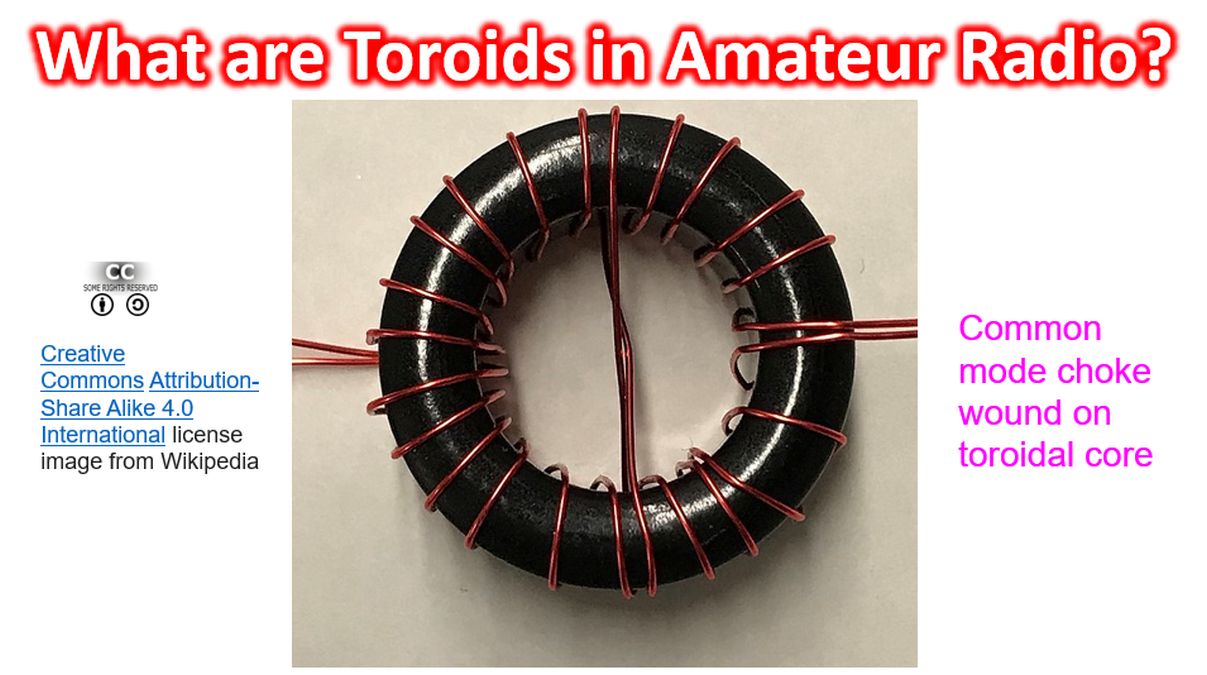What are Toroids in Amateur Radio?
Toroids are quite commonly used in amateur radios, antenna tuners, baluns, common mode chokes and power supplies. Toroids are usually made of powdered iron oxide along with some other metals like cobalt, copper, nickel, manganese and zinc. These metals in powdered form are held together with non-conducting binding material like like epoxy. Biggest advantage of toroid over pure metallic cores for transformers is their high electrical resistivity which reduces the generation of eddy currents. Eddy currents within the core is an important source of loss of energy in transformers. This description mainly pertains to toroids used for RF applications. Toroids for mains transformers can be made of laminated iron cores. Toroids in general have the donut or ring shape.
Advantage of the toroidal shape is that flux leakage or the amount of magnetic flux which escapes outside the core is low. These make toroidal transformers more efficient and cause less electromagnetic interference. In an inductor with a straight core, the magnetic field coming from one end of the core has a long path through air to the other end. Different types of toroids are needed for different applications. Toroid for a switch mode power supply which works at 100 kHz needs high inductance, low loss, low frequency toroids. RF transformer needs a high frequency, low loss toroid with lower inductance. Toroids for suppression of electromagnetic interference needs to be high loss and broadband.
Toroids made of manganese-zinc ferrite have higher permeability and saturation levels and are typcially used for frequencies below 5 MHz. Nickel-zinc ferrites on the other hand have higher resistivity and are suitable for higher frequencies. Please note that common mode chokes for higher end of the radiofrequency spectrum have air cores as they need only lower inductance.

Most of you would have noted different types of numbers for toroids used in different applications. The letters FT indicate ferrite toroids while T indicates toroids made of iron powder. First three digits after the letters indicate the outer diameter of the core in units of 0.01 inches. Last two numbers code for the material. There are materials with letter codes as well. Colour coding is given for iron cores. Ferrite materials have much higher permeability and require fewer turns of winding to obtain a given inductance. More information on numbers for different types of toroids can be found at the Amidon webpage. As an example, I have found people using FT140-43 for the 49:1 balun for end fed half wave antenna, for a power of 50 W and FT 240-43 for a power of 100 W. Larger toroid needs lesser number of turns in the winding. Material 43 used in these toroids have a permeability of 800 and is suitable for wideband transformers up to 50 MHz.